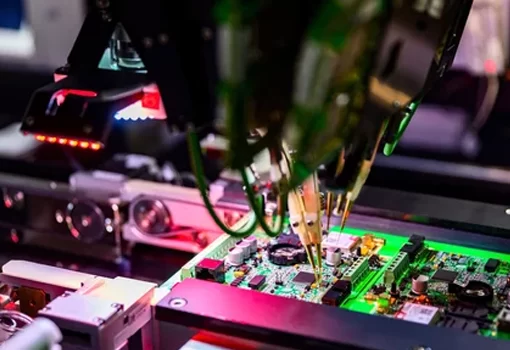Extended virtual reality devices and augmented reality goggles in military training create a cascade of new growth opportunities
A visible trend, even before the COVID-19 pandemic caused the world to withdraw into a prolonged period of limited travel and teleworking, was the growing use of extended reality (XR) devices like virtual reality (VR) and augmented reality (AR) goggles in military training. This trend should accelerate as military services demand assurances that soldiers, sailors and airmen stay up-to-date on training courses, and meet currency requirements mandated by regulation, even while adhering to social distancing rules.
In parallel, there will be a proliferation of wearables/peripherals like gloves, chairs and even bodysuits that augment AR/VR headsets. These devices will increasingly provide users with more realistic, immersive sensory feedback as they operate in simulated environments. Companies with innovative devices that stand to benefit from the growing demand for XR include Microsoft, HP, VR Electronics Ltd., Cyberith, Roto, VRGluv, Manus VR, Bebop Sensors, Haptx, and Varjo.
Recent news that Magic Leap has laid off 50% of its staff would normally be a harbinger of things to come and a cause for concern, specifically in the AR market. However, Magic Leap had been struggling prior to the COVID-19 outbreak and had been focused on the consumer, rather than the military, segment. While there has been some growth in the consumer segment due to consumers being confined to their homes and demanding more AR and VR gaming devices, real growth is occurring in the enterprise space. This involves an increased demand for XR devices that enable remote manufacturing, remote collaboration, and remote training in various verticals, including military training and simulation.
The movement toward distributed military exercises that integrate more virtual constructs into a live scenario, or are completely virtual, will also accelerate. This will allow for a greater amount of operational training to be conducted within virtual environments so operators can train together despite being in different locations. And because virtual environments can be created to represent nearly any terrain, region or weather condition, they will provide an avenue to satisfy the military’s focus on multi-domain training.
Meanwhile, networked exercises will also enable standardized training between forces from the militaries of different countries, enabling them to participate in multinational exercises without having to incur the massive costs of travel and deployment of military equipment. Expansion of distance learning programs, where instructors and students are physically separated, will also result from the COVID-19 pandemic and drive higher demand for XR devices and additional network bandwidth.
There will be significant growth opportunities for companies that manufacture central processing units (CPUs), graphics processing units (GPUs), and video processing units (VPUs). This is because, in order to minimize the amount of data that will quickly clog up wired and wireless information networks, virtual devices will need to have the ability to process more data, faster at the edge – on the actual XR devices themselves. Simulated environments will provide the most immersive training experience when XR technologies are completely wireless and exhibit near-zero latency. Firms that could benefit most in these specific areas include Intel, Apple, NVIDIA, AMD, and Gigabyte.
These trends should hasten the development of the US Army’s Simulated Training Environment (STE) and ongoing tests of virtual construct prototypes. The service’s newest command responsible for STE development, Army Futures Command, should expect additional funding to enable a quicker transition to advanced remote training solutions. The command has already been moving seminars and wargames online, using distance learning collaboration tools to ensure that certain programs are not delayed. To enable this capability, the command will require additional classified network capabilities, which present another growth opportunity for firms that provide related services.
In summary, the need for militaries to maintain readiness through training, even during “Black Swan” events like COVID-19, will drive a paradigm shift in how military training is conducted. This paradigm shift will cause a significant growth in demand for XR devices, edge computing capabilities, and secure networks. Companies providing innovative and/or advanced technologies, which will enable this paradigm shift, stand to benefit greatly in the wake of the current pandemic.




